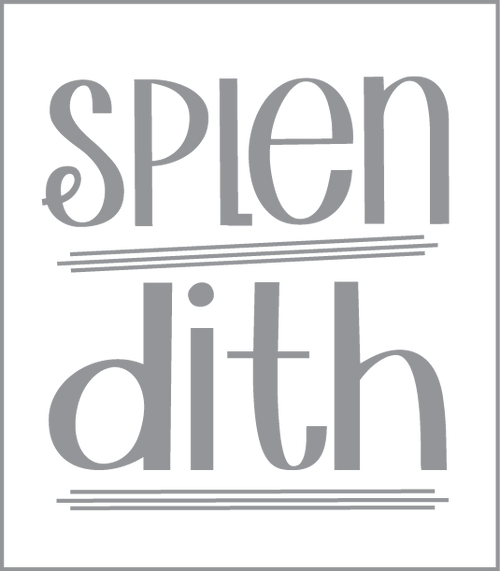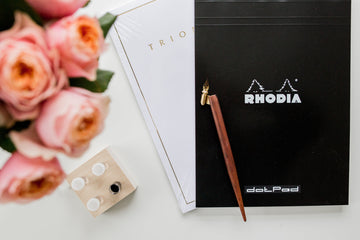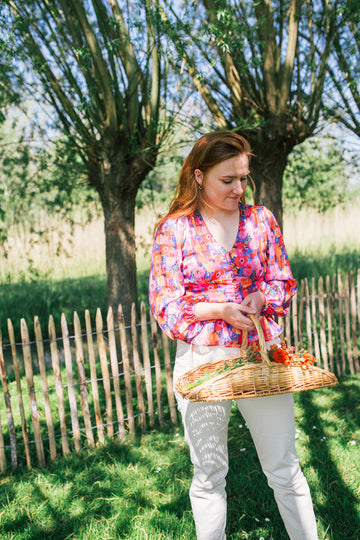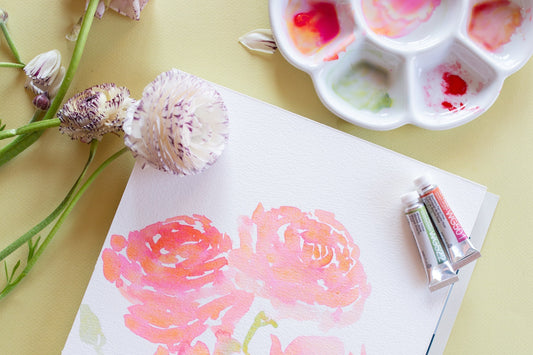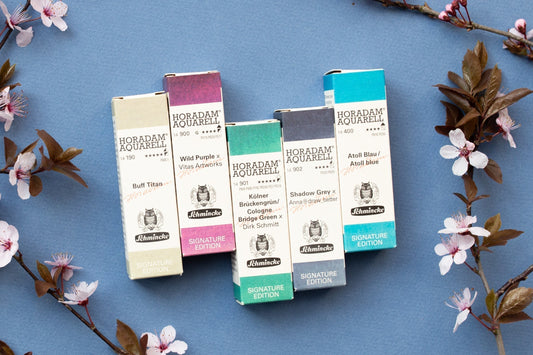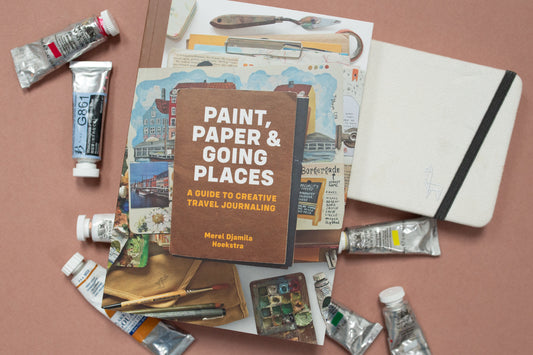With calligraphy you want to get beautiful, sleek letters on paper. That's why the combination of both the ink and the paper is super important! Maybe you've tried calligraphy on copy paper? There is a very good chance that you did not get sharp lines. Standard copy paper completely absorbs the ink. The ink will 'bleed' on your paper. It is important that you use paper that is suitable for calligraphy. If you thought you had a wide range of nibs, the choice of paper is overwhelming. There are a number of rules you can use when choosing paper. You don't have to buy expensive paper, but these are some things you can pay attention to.
PS: I obviously forgot to pay attention to the spelling while I was focused on writing. Of course it bleeds ;).
Tips for choosing paper
Copy paper is a 'No go'
Copy paper is often a 'cotton' paper, which is a very absorbent type of paper. It seems like a nice cheap option, but once you try it you will quickly come back from it. I simply recommend not using this paper. Laser printer paper is sometimes worth a try. You could try HP Laserjet Premium. Choose more than 80g/m2, otherwise you will get bumps in the paper due to the moisture from the ink or paint.
Thin paper is a gamble
Thick paper is often a safe choice. Maybe you are writing on thin paper and you notice that it is bulging, then it is probably because it does not handle the moisture of the ink very well. Thicker paper may be the solution. In general, the paper should be 80 grams or heavier.
Smooth paper is easiest to write on
Are you a beginner in calligraphy? Do not use watercolor paper to practice on. In any case, choose a smooth type of paper. When you write with a calligraphy point on a structured paper, you quickly take a piece of the paper with you.
These are certainly nice types of paper for calligraphy!
For the shop I have made a selection of paper types that are very nice for calligraphy. You will find different sizes of paper pads from Rhodia and A4 pads from Clairefontaine Triomphe. I have the Rhodia blocks in different sizes and designs in the shop: blank, with lines and with dots, ideal guides for your drills!
Do you have any tips for good paper?
I really want to offer you the best calligraphy tools, that's why I'm always looking for great materials for the shop! What do you think are nice types of paper for calligraphy? Please let me know, with your input I can continue to improve the shop.
Love,
Judith
